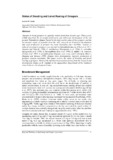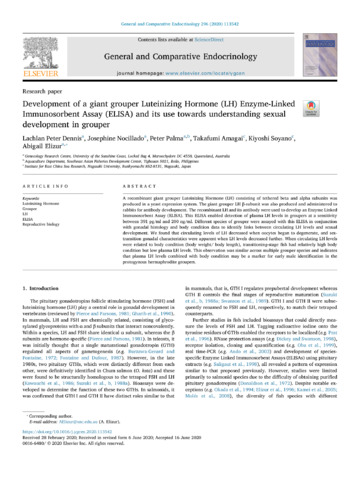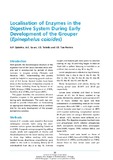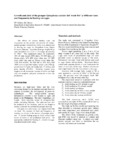Status of breeding and larval rearing of groupers
- Global styles
- MLA
- Vancouver
- Elsevier - Harvard
- APA
- Help
Share
นามธรรม
Attempts to breed groupers in captivity started about four decades ago. Ukawa et al. (1966) described the successful fertilization and embryonic development of the red grouper Epinephelus akaara. Fueled by the high market value of live groupers and the inconsistent supply of juveniles from the wild, research on broodstock development and seed production of grouper has been intensified since the1980s. Natural or induced spawning in groupers was reported in Epinephelus tauvina (Chen et al. 1977, Hussain and Higuchi, 1980), E. malabaricus (Ruangpanit et al. 1986), E. salmoides (Kungvankij et al. 1986), E. fuscoguttatus (Lim et al. 1990), E. suillus (=E. coioides) (Toledo et al. 1993), E. polyphekadion (Sugama, pers. com), and Cromileptes altivelis (Sugama and Ikenoue 1999). Despite these developments, hatchery production of groupers remains unreliable. This paper reviews the status of breeding and larval rearing of groupers. Much of the information presented derives from the research and development studies on E. coioides at the Aquaculture Department of the Southeast Asian Fisheries Development Center.
การอ้างอิง
Toledo, J. D. (2002). Status of breeding and larval rearing of groupers. In Report of the Regional Workshop on Sustainable Seafarming and Grouper Aquaculture, Medan, Indonesia, 17-20 April 2000. Collaborative APEC Grouper Research and Development Network (FWG 01/99) (pp. 47-54). Bangkok, Thailand: Network of Aquaculture Centres in Asia-Pacific.
Type
Conference paperคอลเลกชัน
- Conference Proceedings [299]
Related items
Showing items related by title, author, creator and subject.
-
Development of a giant grouper Luteinizing Hormone (LH) Enzyme-Linked Immunosorbent Assay (ELISA) and its use towards understanding sexual development in grouper
Peter Dennis, Lachlan; Nocillado, Josephine; Palma, Peter ; Amagai, Takafumi; Soyano, Kiyoshi; Elizur, Abigail (Elsevier, 2020-07-13)
A recombinant giant grouper Luteinizing Hormone (LH) consisting of tethered beta and alpha subunits was produced in a yeast expression system. The giant grouper LH β-subunit was also produced and administered to rabbits ...
; Amagai, Takafumi; Soyano, Kiyoshi; Elizur, Abigail (Elsevier, 2020-07-13)
A recombinant giant grouper Luteinizing Hormone (LH) consisting of tethered beta and alpha subunits was produced in a yeast expression system. The giant grouper LH β-subunit was also produced and administered to rabbits ... -
Series: ACIAR Monograph 110
Localisation of enzymes in the digestive system during early development of the grouper (Epinephelus coioides)
Quinitio, Gerald F.; Sa-an, Analyn C.; Toledo, Joebert D.; Tan-Fermin, Josefa D. (Australian Centre for International Agricultural Research, 2004)This study was undertaken to investigate the occurrence of some digestive enzymes in the gastrointestinal tract during early development in the grouper. This work was conducted to provide information on formulating an ... -
Growth and yield of the grouper Epinephelus coioides fed 'trash fish' at different rates and frequencies in floating net cages
Galzote, G. V.; Abrera, E. C. (Bureau of Agricultural Research, Department of Agriculture, 2007)The effects of various feeding rates and frequencies on the growth and survival of orangespotted grouper Epinephelus coides were determined in floating net cages in Tiniguiban Cove, Puerto Princesa, Palawan. Juveniles ...





